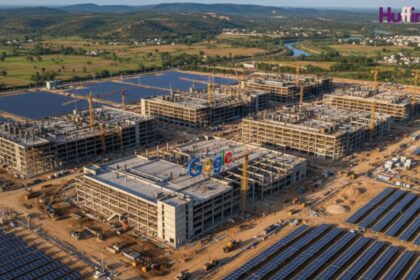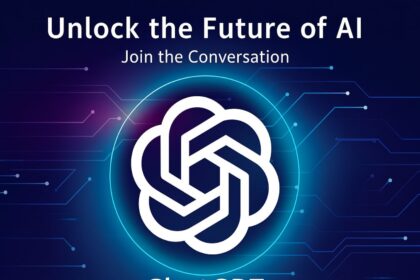The release of GPT-5 in August 2025 has fundamentally altered the trajectory of artificial intelligence development, compressing previously conservative timelines for achieving artificial general intelligence (AGI) and triggering an unprecedented wave of AI-powered tools across consumer and enterprise markets. This technological milestone has reshaped industry predictions, accelerated investment flows, and intensified discussions about AI safety, governance, and societal impact as we navigate an increasingly AI-integrated world.
GPT-5 represents a qualitative leap beyond incremental improvements seen in previous model generations. The system demonstrates what researchers describe as “PhD-level” reasoning capabilities across multiple domains, including advanced mathematics, complex coding challenges, scientific analysis, and nuanced writing tasks. Unlike earlier models that primarily excelled at pattern matching and text generation, GPT-5 exhibits genuine problem-solving abilities, multi-step reasoning, and the capacity to synthesize information across disparate knowledge domains in ways that closely approximate human expert performance.
The implications of these capabilities have reverberated throughout the AI research community, with many experts significantly revising their predictions for when artificial general intelligence might emerge. Previous consensus estimates suggested AGI development would occur sometime between 2040 and 2070, based on gradual improvements in existing approaches. However, GPT-5’s demonstrated capabilities have compressed these timelines dramatically, with many researchers now suggesting AGI could emerge as early as 2026-2035.
This timeline acceleration reflects not just GPT-5’s current capabilities, but the rapid pace of improvement in underlying AI infrastructure. Advanced graphics processing units, distributed computing architectures, and novel training techniques are enabling larger, more sophisticated models to be developed and deployed with increasing frequency. The computational resources required for frontier AI development continue growing exponentially, but so does the availability of specialized hardware and cloud computing capacity designed specifically for AI workloads.
The entrepreneurial response to GPT-5’s capabilities has been swift and comprehensive, with thousands of companies building applications and services that leverage advanced AI reasoning. Consumer-facing applications now include AI-powered content creation tools that can produce publication-quality articles, marketing materials, and creative content with minimal human input. Video editing platforms use AI to automate complex editing tasks, suggest narrative improvements, and even generate synthetic content that seamlessly integrates with recorded material.
Music composition and audio production have been revolutionized by AI tools that can generate original compositions in specific styles, create realistic instrumental performances, and even synthesize human-like vocals for any lyrics or language. These capabilities are democratizing creative industries by enabling individuals without traditional technical skills to produce professional-quality content, while simultaneously raising concerns about authenticity, copyright, and the future of human creative professions.
Enterprise applications of advanced AI are transforming business operations across industries. Customer service systems now deploy AI agents capable of handling complex inquiries, understanding context and emotion, and resolving issues that previously required human expertise. Sales and marketing teams use AI to analyze customer behavior, predict purchasing decisions, and personalize communications at scale previously impossible with human-only approaches.
Financial services are integrating AI for fraud detection, risk assessment, and investment analysis with capabilities that surpass traditional algorithmic approaches. AI systems can now analyze market sentiment, regulatory changes, and economic indicators simultaneously to provide insights that inform trading strategies and risk management decisions. Compliance and regulatory reporting, traditionally labor-intensive processes, are being automated through AI systems that can interpret complex regulations and ensure adherence across large organizations.
Healthcare applications of advanced AI are perhaps the most promising and carefully regulated. Diagnostic AI systems can now analyze medical imaging, laboratory results, and patient histories to identify conditions and suggest treatments with accuracy that matches or exceeds specialist physicians in many domains. Drug discovery processes are being accelerated through AI systems that can predict molecular interactions, identify promising compounds, and optimize clinical trial designs.
The legal profession is experiencing significant AI integration, with tools that can analyze contracts, conduct legal research, and even draft complex legal documents. These systems can process vast amounts of case law, identify relevant precedents, and suggest legal strategies based on historical outcomes and current regulatory environments. However, the high-stakes nature of legal work requires careful human oversight and raises important questions about professional responsibility and liability.
Educational technology is leveraging advanced AI to create personalized learning experiences that adapt to individual student needs, learning styles, and pace. AI tutoring systems can provide detailed explanations, generate practice problems, and identify knowledge gaps with precision that enables more effective learning outcomes. However, concerns about academic integrity, critical thinking development, and the role of human educators in AI-enhanced learning environments require careful consideration.
The rapid deployment of AI tools across these domains has intensified focus on safety, governance, and ethical considerations. Current AI systems, while powerful, can produce outputs that are convincing but factually incorrect, exhibit biases present in training data, or be manipulated to produce harmful content. The challenge of ensuring AI safety becomes more complex as systems become more capable and are deployed in higher-stakes applications.
Regulatory frameworks are struggling to keep pace with AI development, with policymakers worldwide grappling with how to encourage innovation while protecting against potential harms. The European Union’s AI Act, California’s proposed AI regulations, and various federal initiatives represent attempts to create governance structures, but the global nature of AI development and deployment creates coordination challenges.
International cooperation on AI safety and governance has become increasingly urgent as capabilities advance. Researchers and policymakers are working to establish common standards, share safety research, and coordinate responses to potential AI risks. The challenge lies in balancing national competitiveness concerns with collective safety interests and ensuring that safety measures don’t inadvertently advantage actors with fewer ethical constraints.
The economic implications of AI advancement are profound and multifaceted. While AI promises significant productivity gains and new industry creation, it also threatens to displace workers across many professions previously considered immune to automation. The transition period requires careful management to ensure benefits are broadly distributed rather than concentrated among technology companies and their shareholders.
Workforce adaptation strategies are becoming critical policy priorities, with emphasis on reskilling programs, educational curriculum updates, and social safety net modifications that can support workers during technological transitions. The skills that remain uniquely valuable in an AI-dominated economy increasingly center on creativity, emotional intelligence, complex problem-solving, and the ability to work effectively alongside AI systems.
As we navigate this post-GPT-5 landscape, the next 12-18 months will likely prove decisive in determining whether AI development continues on its current trajectory toward AGI or encounters technical, regulatory, or resource limitations that moderate the pace of progress. The decisions made by researchers, companies, and policymakers during this critical period will shape the AI landscape for decades to come, with implications for virtually every aspect of human society and economic activity.


























